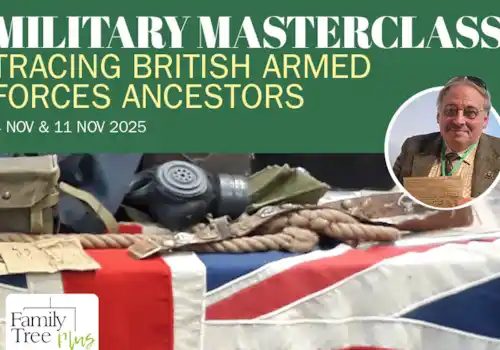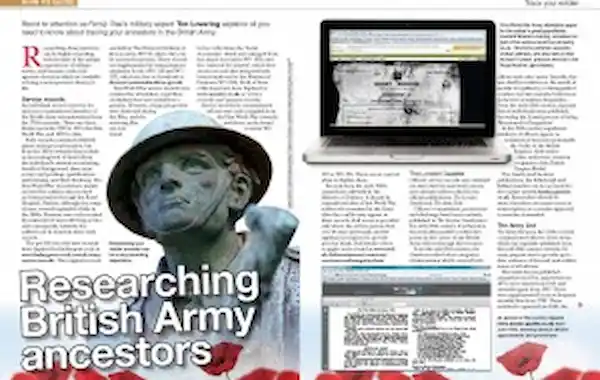11 October 2012
|
In the November issue of Family Tree we are honouring our family war heroes. Here, Assistant Editor Karen Clare reveals how our f
In the November issue of Family Tree we are honouring our family war heroes. Here, Assistant Editor Karen Clare reveals how our feature on researching British Army ancestors has inspired her to find out more about her own grandfather's war service...
Armistice. The word is incredibly emotive. A moment captured in time for eternity. Every November, of course, we mark The Armistice of World War I, when the warring parties agreed to stop fighting on 11 November 1918, effective at the 11th hour of the 11th day of the 11th month.
Really, I can hardly believe it is that time of year again. The nights are drawing in, the woollies are out, and our November issue is perched enticingly on the shelves. Editing articles in Family Tree is always fascinating, often enlightening (like our readers, I learn something new every issue) and, admittedly, sometimes a rather tear-jerking job too. This is particularly true when working on the November issue, where we traditionally take time to think about our relatives who fought so valiantly in unimaginably appalling conditions to keep us free. I'm not ashamed to admit it brings tears to my eyes right now just thinking about all those that came before, and the many who tragically lost their lives in conflict.
If you've not yet begun researching your military forebears, then November is the perfect time to start, while they are fresh in your mind and heart. So much is being made available online all the time that it can be hard to keep up, but of course Family Tree always keeps me up to date. In our November issue, our military expert Tim Lovering not only provides the key websites needed for your research but he also explains all you need to know about tracing your ancestors in the British Army, from the 1760s onwards.
Tim’s article gave me lots of new web leads to follow up, such as using the online London Gazette and The Army Lists, and has re-ignited my enthusiasm to carry on researching my great-grandfather’s service in World War I. Up until now I have only dipped my toe into the records, but there is so much more available since I last looked.
I even feel emboldened to talk to my 92-year-old grandad more about his experiences in the Second World War. While helping him prepare to move home recently, he revealed that a wooden carving on his wall of a Bavarian forest scene (which I've been familiar with all my life) was actually handmade by a German prisoner-of-war he was guarding. The same artistic fellow also did a drawing of my dad and uncle as small children, from a photograph my grandad had. I glanced up at the wall – and there was the sketch. It was a revelatory, touching moment, but we were interrupted and sadly I didn't follow it up. I've always shied away from asking Grandad about his wartime service because I didn't want to upset him, particularly as a family story says he was one of the first British soldiers into Belsen after it was liberated - which would have been an utterly harrowing experience.
But I am extraordinarily lucky to still have my grandad around to ask, so now is the time to follow Tim’s tips and seize the day. They are their wars but our stories. Find them, honour them, hand them on. Lest we forget, we owe it to them.
Read Tim Lovering’s full article in the November issue of Family Tree for expert tips and essential websites. You can download it right now from PocketMags.com, App Store or Google Play. Plus the print edition is available from all good magazine retailers and from our own bookshop.








